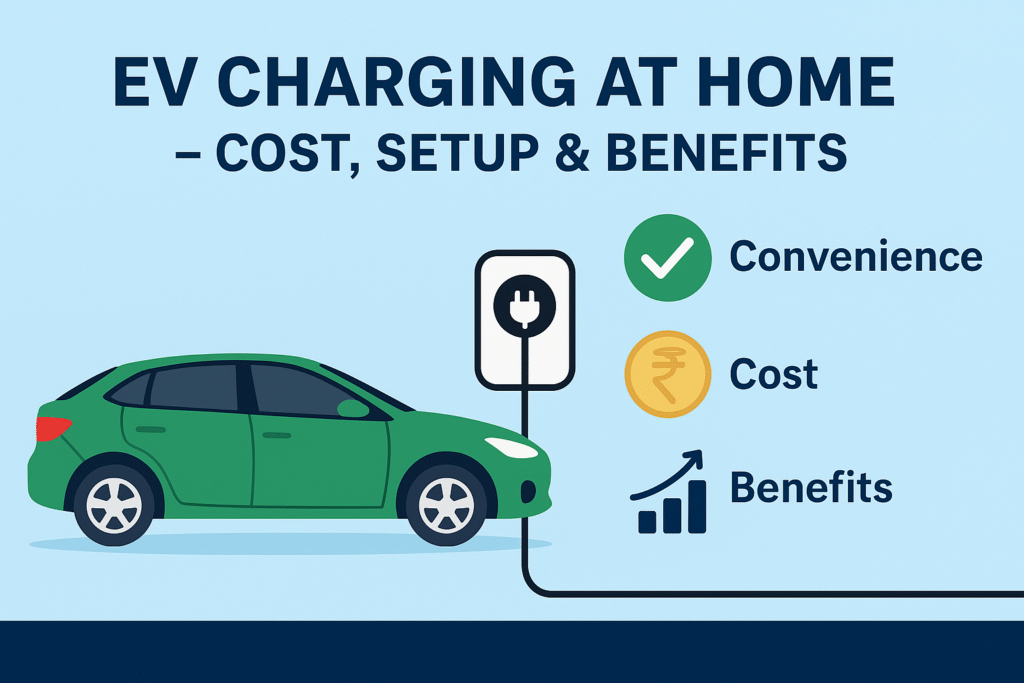With the growing popularity of electric vehicles (EVs) in India, one of the most common questions people ask is: “Can I charge my EV at home?”
The answer is yes! In fact, home charging is the most convenient and affordable way to keep your EV ready for daily use.
we’ll explain the cost, setup process, benefits, and key things to keep in mind when installing an EV charging point at home.
Why Home Charging Matters
Most EV owners prefer charging at home because:
You don’t need to wait at public charging stations.
Charging happens overnight, so the car is ready every morning.
It is usually cheaper than using public chargers.
How to Set Up EV Charging at Home
Check Your Electrical Connection
A standard 15A socket can be used for slow charging.
For faster charging, you may need to install a dedicated wall-mounted charger (Wallbox) with proper wiring.
Hire a Licensed Electrician
Always call a professional to ensure the setup is safe.
They will check wiring load capacity and install proper earthing.
Charger Types
Normal Socket Charger (AC Level 1): Slow, takes 8–10 hours.
Wallbox Charger (AC Level 2): Faster, usually 3–6 hours depending on car battery size.
Cost of EV Home Charging Setup
Using normal 15A socket: Minimal cost, just regular electricity bill.
Wallbox Charger installation:
Charger device: ₹25,000 – ₹60,000 (varies by brand & car company).
Installation: ₹5,000 – ₹15,000 (depends on wiring & distance).
Monthly charging cost:
Example: If electricity is ₹8 per unit, and your EV consumes 15 units for 100 km, the cost is around ₹120 for 100 km, much cheaper than petrol or diesel.
Benefits of Home EV Charging
✔️ Convenience – Charge anytime at home.
✔️ Cost-Effective – Lower running cost compared to petrol/diesel.
✔️ Safety – Controlled environment reduces risk.
✔️ Battery Health – Overnight slow charging is good for long battery life.
Things to Keep in Mind Before Installation
Check Load Capacity: Ensure your home connection can handle the charger load.
Dedicated Circuit: Avoid plugging into regular household sockets for long-term use.
Proper Earthing: Prevents shocks and ensures safety.
Weather Protection: If charger is outside, it should be waterproof (IP65 rating).
Government Subsidies: Some states in India provide subsidies or incentives for EV charger installation.
Charging your EV at home is not only simple but also the smartest way to save money and time. With the right setup, you can enjoy hassle-free charging, lower running costs, and complete convenience.

